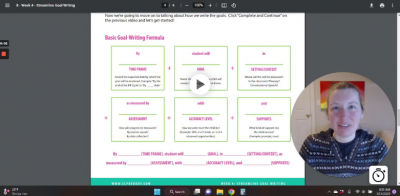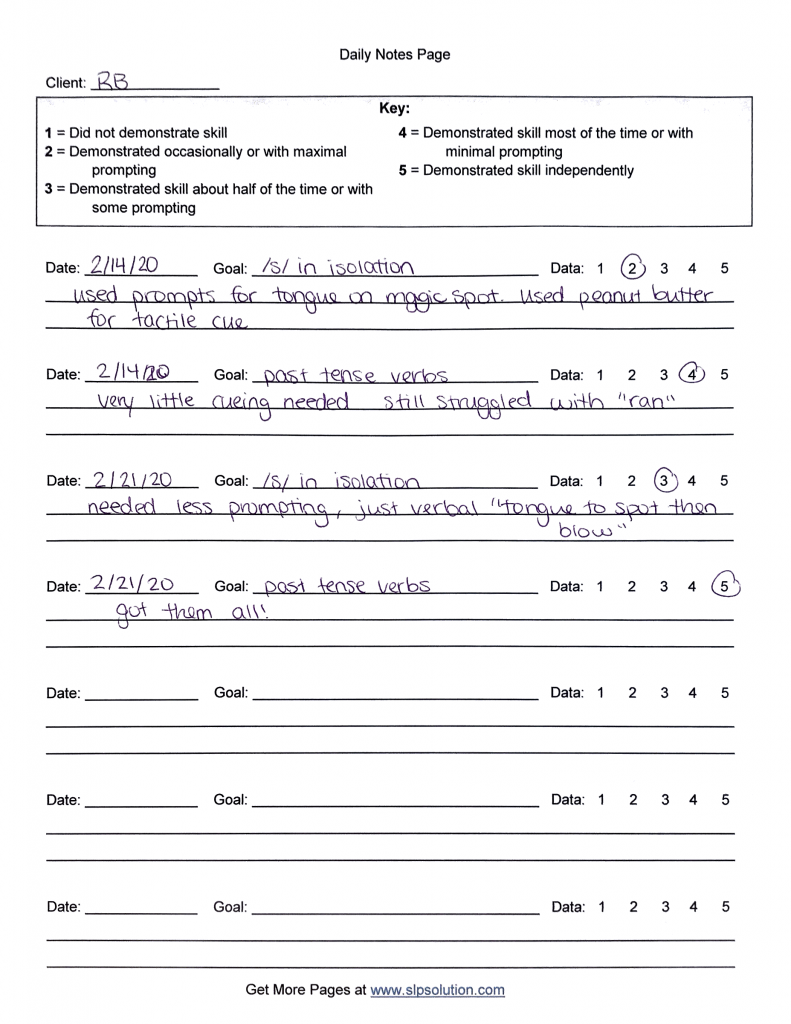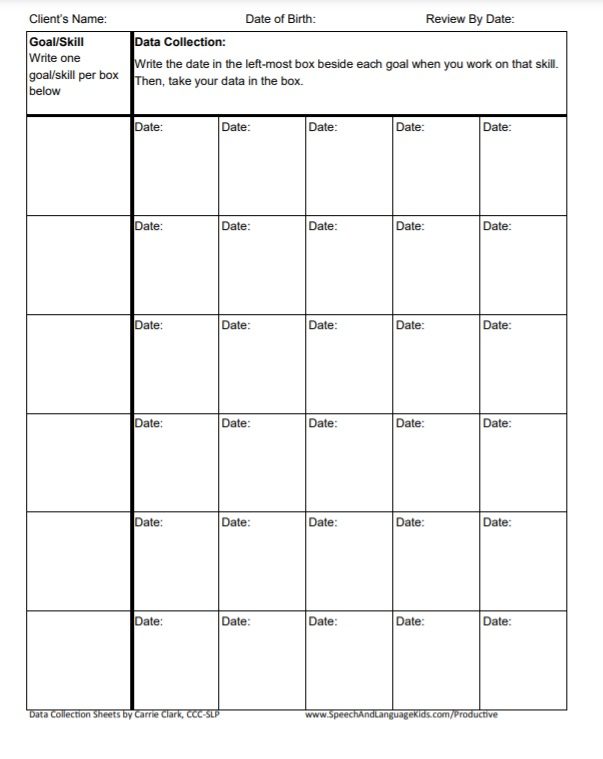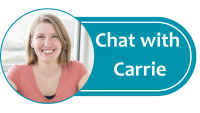Speech Data Collection:
Taking Data Once per Month + Daily Notes Page
We all know that collecting data and documenting our clients’ progress in integral to what we do as speech-language pathologists or speech-language therapists. But what frequency is ideal for collecting data? Should you take data on every single repetition of a skill that a child does? Only once per week? Once per month? Or just when report cards are due?
Check out my answer here:
How Often Should I Collect Data in Speech-Language Therapy?
My professional opinion is that there is no reason to collect data on every single repetition or trial. In fact, I believe this takes away from the benefits of therapy because if you are spending so much time collecting data, then you’re probably not spending as much time teaching, prompting, and providing feedback to your clients. And that’s where the magic is. That’s what only we can provide to our clients!
The best frequency to collect in-depth data during speech-language therapy is once per month. Here’s why:
- Often our clients don’t make such fast progress that you need to capture that data during every single session. If you do have a client who makes such fast progress, you can definitely take data more frequently for that client. But that can be the exception, not the rule.
- By focusing on data collection only once per month, you can spend more time focusing on the therapy and help the client make faster progress in between your in-depth data days.
What about Daily Notes?
Don’t get me wrong, there is definitely a place for taking daily notes about what you worked on and how the client performed during that session. And some insurance companies or employers will require that you have actual data for each session. But that doesn’t mean that we need to record every repetition during those sessions. We can use rubric-style grading to assign a score to the child’s performance for the day and jot some brief notes and how they did or what cues they needed. This doesn’t need to take more than a few minutes toward the end of the session. You can even do this while the client is cleaning up and packing to go back to class.
Here’s how our daily notes look:
How to Structure Your Therapy Days vs. Data Days
My favorite way to schedule this out is to have three weeks of therapy for every one week of data (ish). I use last week of the month as a “review week” where I focus entirely on collecting thorough data on as many skills as possible so I have a complete picture of how the child is doing on their communication goals. Then, I choose 1-3 targets to address during the following month. The first three weeks of the month are completely dedicated to being present with my clients, providing the best possible therapy.
Here’s how that looks:
- First 3 Weeks of the Month – Intense Therapy: My clients come in and I follow their lead. I work their therapy targets into the activities they are interested in. I provide prompts and teaching and I only take the limited amount of data that I need to keep track of what we’re working on and how it’s going (so I can make informed decisions about how to tackle the skill during the next session)
- Last Week of Month – Review Week: This week, I collect as much data as possible with as little teaching/prompting as possible. This helps me understand the big picture of how the child is doing. I may also observe them in the classroom or talk to teachers/parents about how things are going. Then, I choose 1-3 targets to address during the following month.
How to Collect Data During Review Week:
There are so many different ways to collect data during your review week but I’m a big fan of the first page of our data collection page freebie pack. This one allows me to list several goals on the same page and collect data in rows. Then I can easily see which skill we haven’t addressed yet and how they’re progressing on each one. Here’s the data sheet I mean:
How to Collect Data During Mixed Groups
Conducting your review week with a mixed group can be particularly difficult. I recommend setting up stations around your therapy space. Hand each client a list of words, skills, etc. that they can do mostly independently. This should serve to reinforce whatever you’ve been working on this month. Remember, brain pathways get stronger the more they are used! Then, make one of the stations you. You’ll collect data with one client while the rest in the group are doing their independent practice.

About the Author: Carrie Clark, MA CCC-SLP
Hi, I’m Carrie! I’m a speech-language pathologist from Columbia, Missouri, USA. I’ve worked with children and teenagers of all ages in schools, preschools, and even my own private practice. I love digging through the research on speech and language topics and breaking it down into step-by-step plans for my followers. I graduated from Truman State University in Kirksville, MO with a masters degree in Communication Disorders.
Connect with Me:










Thanks for sharing this type of information. Great Blog.
This is so important to talk about! I think what we learn in grad school is not always realistic and best practice once we’re in the field.
thanks for helpfull writing. this article very important and true.
I’m constantly searching on the internet for posts that will help me. Too much is clearly to learn about this. I believe you created good quality items in Functions also. Keep working, congrats!